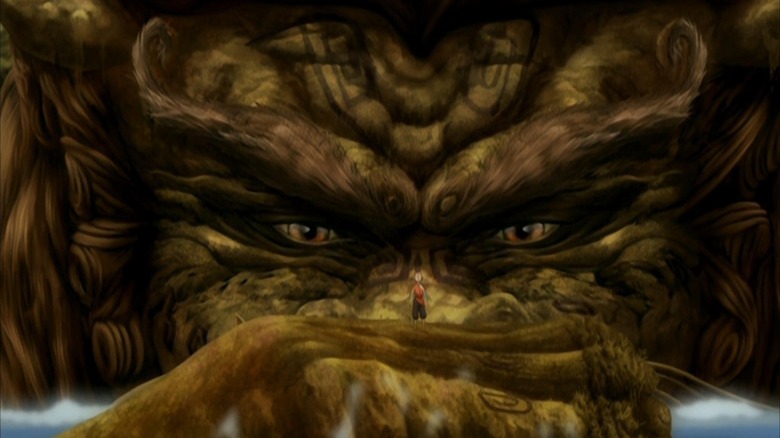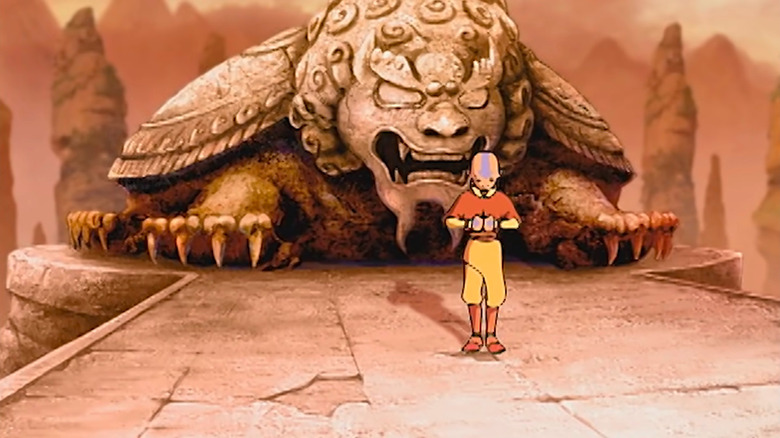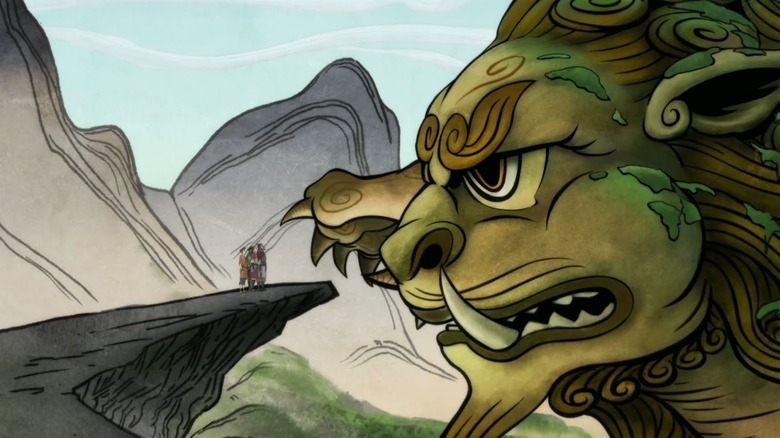The Key To The Avatar: The Last Airbender Finale Was Planned From The Beginning
"Avatar: The Last Airbender" ended 15 years ago with "Sozin's Comet," bringing to a close an epic cartoon of unprecedented proportions, a show that still stands the test of time as one of the best stories told in television, regardless of medium and genre — and to think the show was technically not picked up after season 2.
The story of Aang, a young boy and the last surviving member of his nation who is tasked with ending a 100-year-old war before the whole world gets conquered by a genocidal megalomaniac, was like nothing else on TV. This was a cartoon aimed at young audiences that nevertheless touched on themes of grief and change, but also genocide, imperialism, and the effect of war on children. Add in a fleshed-out world, mythology on par with "Lord of the Rings," and some of the best action in a Western animated series and you get a modern classic that Mark Hamill once called "too smart" for TV.
The series ends with a feature-length, four-part episode wherein Aang and his friends finally face off against Fire Lord Ozai as he prepares to conquer the world. It is a finale full of fan-favorite moments, big reveals, and incredible action, but it also has one of the more controversial elements of the entire franchise: the lion turtle.
Introduced in part two of the four-part finale, the lion turtle is a massive and ancient creature, the last of his kind. It offers Aang some wisdom and grants him the power to avoid killing the Fire Lord, but takes his bending away. This decision proved controversial amongst fans, with many considering it a deus ex machina moment. The thing is, the lion turtle was always part of the plan, even before a single frame of the show made it on air.
It's all part of the plan
Speaking to Newsweek for the 10th anniversary of "Sozin's Comet," co-creator Bryan Konietzko explained that a lot of the story, the characters, and the world were created as they were pitching the show to Nickelodeon. "We expanded upon many of those ideas in the subsequent months as we created the series bible and then the test pilot."
Part of that test pilot, which you can watch online, is the lion turtle itself. It appears in an earlier version of the opening title sequence right behind Aang, in massive statue form. "It wasn't just part of the production design — we were planning its role in the finale even that far back," Konietzko added. Indeed, though we don't see the actual lion turtle until the finale, we see images of it throughout the series, like on a white lotus tile, or mentioned by Wan Shi Tong in The Library episode of season 2, or in several statues in the house of Piandao, Sokka's master.
The lion turtle's appearance and power may have been a bit sudden, sure, but it is clearly a part of the world long before we meet it. More importantly, it does support the idea we see over and over in both "Avatar" shows, that the spirit world is simply way more vast, ancient, and powerful than we know.
Coming full circle
Even though the lion turtle only got a brief role in "Avatar: The Last Airbender," the creators wanted to do more. "About halfway through the series, I recall pitching some ideas about the original Avatar and the lion turtles to Mike," Konietzko explained. "We thought it would be awesome to do it as a movie someday, but we were doubtful we would ever get the opportunity, so we ended up incorporating that origin story in 'The Legend of Korra' with Avatar Wan."
Indeed, one of the best episodes of the "Legend of Korra," simply titled "Beginnings," tells a two-part story about the origin of the very first avatar, Wan. In the episode, we explore how lion turtles literally carried entire cities on their backs, and how it was they who first bestowed bending to humans — albeit temporarily. It was a great way of paying off one of the most mysterious creatures in all of "Avatar," tying it to the spirit realm that was the source of a lot of mysticism and fascinating fantasy ideas.


